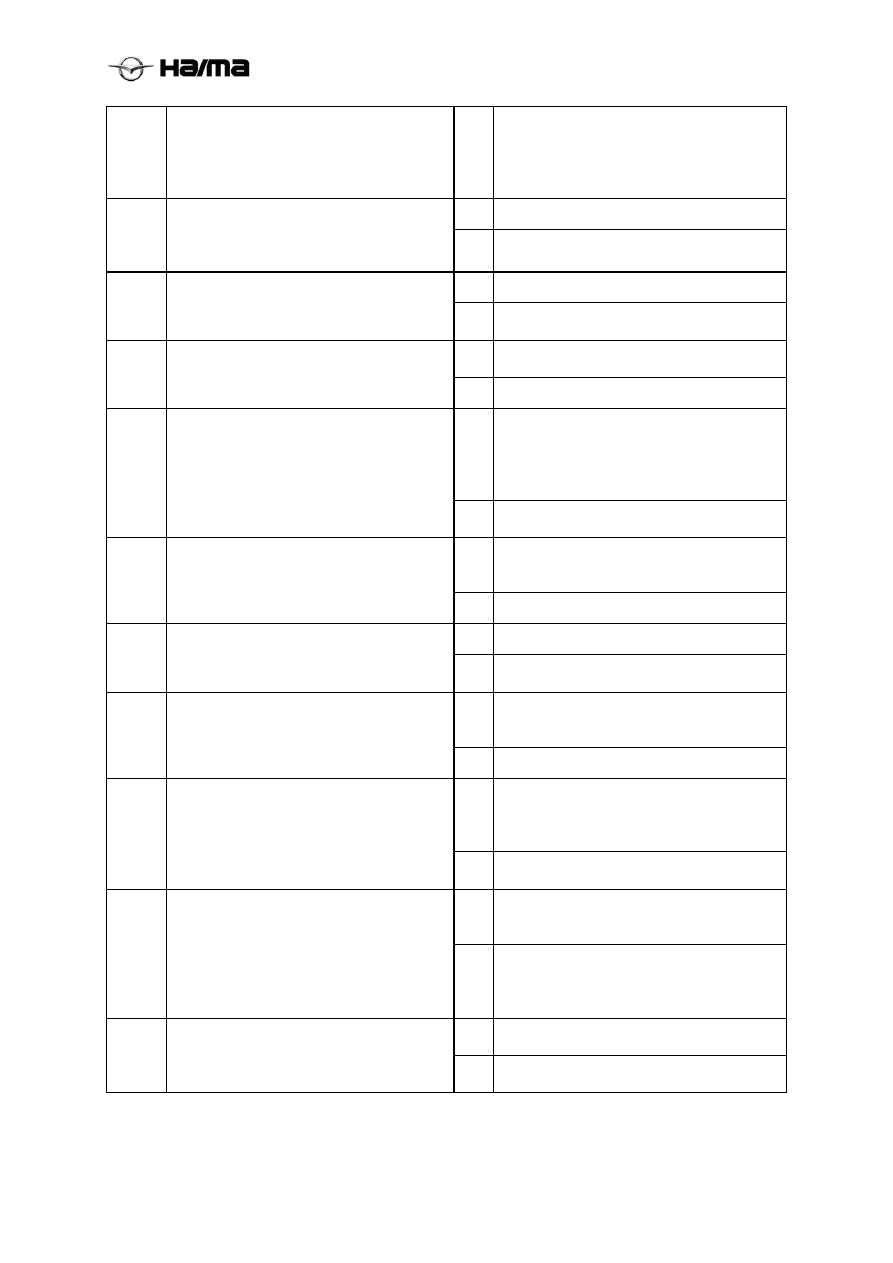Haima S5 1.5T. A/C, Restraint System, Body Accessories, Electrical System. Manual - part 2

A/C System3A-16
No
If the pipeline or A/C parts are damaged or
fissured, replace them, and then go to the
step 19. If there is air leakage, repair or
replace the connector, replace the
receiver/dryer and then go to the step 19.
Yes Go to the next step.
10
Add the 20ml{20cc.0.8fl oz} compressor
oil.
Can any noise be heard under the high
operation of the engine?
No
End the fault diagnosis and explain the
repair details to the customer.
Yes Go to the next step.
11
Drain the compressor oil.
Is there any metallic particulate pollutant?
No
Replace the A/C compressor and then go to
the step 19.
Yes
Replace the entire A/C system (except for
the heater) and then go to the step 19.
12
Is the compressor oil whitened or be mixed
with water?
No
Go to the next step.
Yes
Replace the A/C compressor and the
receiver/dryer (because the A/C compressor
may be worn and the receiver/dryer may be
blocked, it is necessary to replace them) and
then go to the step 19.
13
Is there any click sound? (the operating
noise of the electromagnetic clutch)
No
The condition is normal and recheck the
fault symptom.
Yes
Replace the A/C compressor, and then go to
the step 19.(A/C compressor drain valve is
kept open)
.14
Can you hear any noise right after the A/C
compressor stops?
No
Go to the next step.
Yes Go to the next step.
15
Is the drive belt normal?
Refer to Checking the Drive Belt, Drive
Belt, Section B.
No
Adjust or replace the drive belt and then go
to the step 19.
Yes
Remove the sundries and greasy dirt or
replace the drive belt, and then go to the step
19.
16
Is the drive belt worn? Is there any attached
sundries? Is there any greasy dirt?
No
Go to the next step.
Yes
Replace the A/C compressor (except for the
electromagnetic clutch pressure plate, the
belt pulley and the coil) and then go to the
step 19.
17
Is the electromagnetic clutch normal?
Refer to Checking the Electromagnetic
Clutch, Control System.
No
Replace the electromagnetic clutch and then
go to the step 19.
Yes
Visually check the A/C compressor and
replace relevant parts when necessary, and
then go to the next step.
18
Is the noise from the A/C compressor?
No
If the noise is caused by the refrigerant
pipeline, repair the loosened or missed clips
and tighten the screws, and then go the next
step.
Yes
End the fault diagnosis and explain the
repair details to the customer. .
19
Does the noise stop out of the A/C
compressor?
No
If the fault reoccurs, recheck the fault
symptom and start from the step 1.